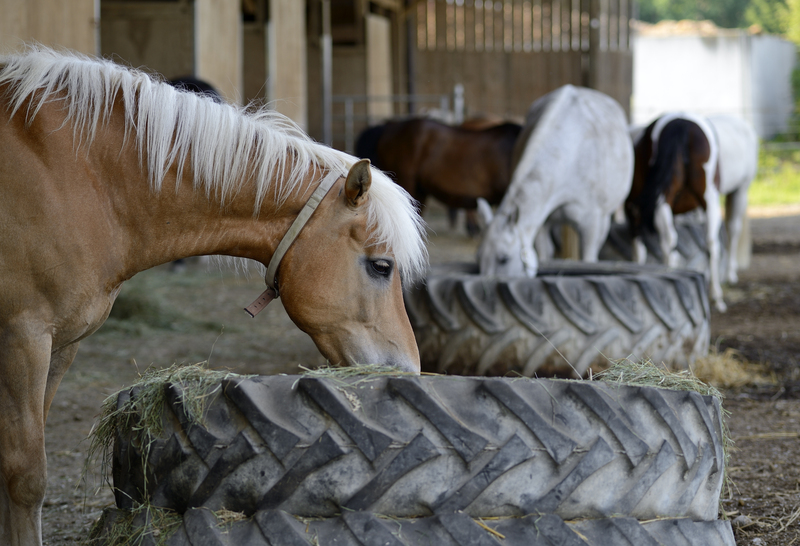The Dos and Don'ts of PPE Waste Disposal
In today's health-conscious world, the safe management of PPE (Personal Protective Equipment) waste has become a crucial topic. With the increased use of masks, gloves, face shields, and other forms of protective gear, both in medical settings and among the general public, understanding proper PPE waste disposal methods is vital for public health and environmental sustainability. This article dives deep into well-researched dos and don'ts of handling PPE trash and offers a comprehensive guide to ensure you are not only compliant with regulations but also contributing to a cleaner, safer planet.
Why Proper PPE Waste Disposal Matters
The outbreak of pandemics such as COVID-19 has dramatically escalated the use of disposable personal protective equipment. Improperly discarded PPE poses significant risks, including:
- Environmental Hazards: Non-biodegradable PPE components can pollute land and water bodies.
- Health Risks: Used PPE may carry pathogens, exposing sanitation workers, wildlife, and the general public to infectious diseases.
- Legal Compliance: Many local and national regulations dictate how infectious and medical waste, like masks and gloves, should be handled.
PPE waste management is not just a personal responsibility; it's a matter of public safety.

Types of PPE Waste
Understanding the different types of PPE waste is the first step in ensuring proper disposal. Common PPE items include:
- Disposable face masks (surgical masks, N95 respirators)
- Polymer gloves (nitrile, latex, vinyl)
- Face shields and goggles
- Protective gowns and coveralls
- Disposable shoe covers and hairnets
Each of these items may require specific handling depending on their prior use and potential contamination level.
Key Dos of PPE Waste Disposal
1. Follow Local Guidelines and Regulations
Always follow the waste disposal guidelines set by your local health authorities or workplace. Certain PPE waste, especially from medical facilities or high-risk environments, is classified as hazardous or medical waste and must be handled accordingly.
- Check for color-coded bins designated for infectious or hazardous residues.
- Adhere to local recycling and hazardous waste policies if available for PPE discards.
2. Use Designated PPE Waste Bins
Dispose of used PPE in clearly marked containers. Do not mix used masks or gloves with regular recyclables or household trash unless permitted by guidelines. Sealed, leak-proof bags or bins reduce the risk of contamination and accidental exposure.
3. Seal and Bag PPE Waste Properly
- Double-bag infectious PPE items using strong, tear-resistant bags.
- Tie all bags securely before placing them into designated waste containers.
This additional step minimizes direct contact for sanitation workers and decreases the risk of accidental spills.
4. Wash Hands After Handling PPE Waste
Hand hygiene is critical. After disposing of any personal protective equipment, always wash your hands thoroughly with soap and water for at least 20 seconds, or use an alcohol-based sanitizer if soap isn't available.
5. Inform Others
Educate those around you about responsible PPE waste disposal. In workplaces or shared residences, post clear signs and instructions to guide correct practices and avoid mishandling.
6. Consider Reusable PPE When Possible
If appropriate, opt for reusable masks or protective clothing that can be laundered and sanitized. This reduces the overall volume of waste generated and supports environmental goals.
The Don'ts of PPE Waste Disposal
1. Don't Recycle Used Single-Use PPE
Unless specifically indicated by your local waste management authority, never toss used disposable masks, gloves, or gowns into recyclables. These items are typically non-recyclable and can contaminate recycling streams, endangering workers.
2. Don't Flush PPE Items
Do not flush PPE items such as masks, gloves, or wipes down the toilet or sink. These materials can clog plumbing, damage wastewater treatment systems, and contribute to environmental pollution.
3. Don't Leave Used PPE in Public Spaces
- Avoid littering masks or gloves in parking lots, streets, parks, or public transit.
- This contributes to unsanitary conditions, exposes cleaning staff, and may harm wildlife.
4. Don't Burn PPE Waste at Home
Burning PPE can release toxic fumes and is unsafe in non-industrial environments. Leave incineration of medical waste to approved facilities with proper emissions controls.
5. Don't Reuse Single-Use PPE
Disposable PPE is designed for single use. Reusing these items can compromise their effectiveness and spread contamination. Dispose of used items correctly after each use.
6. Don't Touch PPE Waste Directly
- Use gloves or tongs when handling discarded PPE, especially if it's visibly contaminated.
- Direct contact increases infection risk for you and those around you.
How to Dispose of Different Types of PPE Waste
Face Masks
- Fold the mask so that the inner, contaminated layers are covered.
- Place in a sealed plastic bag before discarding in a dedicated PPE or general waste bin if permitted.
Never throw used masks on the ground or in recyclables.
Gloves
- Remove gloves safely (by peeling inside out) to prevent skin contact with contaminants.
- Bag and tie before discarding PPE gloves with regular waste, or follow local hazardous waste procedures.
Protective Clothing (Gowns, Coveralls)
- If single-use, dispose in designated hazardous waste bins, double-bag if necessary.
- Reusable gowns should be laundered in hot water with detergent after each use.
Face Shields and Goggles
- These are often reusable and should be cleaned and disinfected according to manufacturer's instructions.
- If broken or no longer usable, follow plastics recycling protocols or dispose as PPE waste.
Environmental Impact of PPE Waste
The surge in PPE usage during public health crises has generated millions of tons of waste worldwide. Most disposable PPE items contain plastic fibers (polypropylene, polyurethane) that are not biodegradable.
- Wildlife risks: Animals may ingest or become entangled in discarded PPE.
- Microplastics: As PPE breaks down, it adds to microplastic pollution in oceans and soil.
- Landfill pressure: Increased PPE waste strains landfill capacity and waste management infrastructure.
By following safe PPE disposal practices, you help reduce these environmental threats and support sustainability.
What Can Communities Do?
- Install PPE-specific disposal bins in public areas, workplaces, schools, and healthcare centers.
- Launch local campaigns on safe PPE waste management.
- Work with recycling companies to determine if any PPE components can be processed safely after sterilization.
- Support development and use of biodegradable or compostable PPE alternatives.
Regulatory and Workplace Responsibilities
Employers in healthcare, retail, manufacturing, and public services have a responsibility to:
- Train staff on the proper handling and disposal of PPE waste.
- Provide appropriate waste bins and personal hygiene facilities.
- Ensure compliance with national or sector-specific waste management laws.
- Report any incidents of improper PPE discarding.
Innovations in PPE Waste Treatment
New technologies are being developed to tackle the PPE waste challenge, including:
- Advanced waste-to-energy incinerators with stringent emission controls.
- Specialist recycling for sterilized PPE plastics.
- Pilot programs for collecting and upcycling used PPE into construction materials or new products.

Frequently Asked Questions on PPE Waste Disposal
Can PPE be recycled?
In most cases, used PPE cannot be recycled through regular municipal recycling due to contamination risks. Some new programs are exploring safe sterilization and recycling of certain PPE items, but always check with your local waste authority first.
Is it safe to dispose of PPE with regular household waste?
For non-infectious PPE like general-use face coverings and gloves, it's usually acceptable (if permitted locally). However, always bag them securely and never place in recycling bins.
How should businesses handle PPE waste?
Businesses, especially those with high volumes of PPE use, should provide designated disposal bins, double-bag waste, and coordinate with professional waste management services to ensure compliant and safe disposal.
What should I do if I see PPE litter?
If you must pick up someone else's discarded PPE, use gloves or a litter-picker, then dispose of both gloves and the waste responsibly. Otherwise, notify local authorities or sanitation services.
Conclusion: Your Role in Responsible PPE Waste Disposal
Every individual and organization has a part to play in managing PPE waste responsibly. By adhering to the above dos and don'ts, you not only protect yourself and others from potential hazards, but you also contribute to the broader goal of environmental protection and sustainability.
- Always follow local guidance on PPE waste management.
- Educate and encourage others to adopt safe disposal habits.
- Support innovations and community initiatives to reduce PPE waste.
Together, through informed action and responsible practices, we can mitigate the harmful impacts of PPE waste and create cleaner, healthier environments for all.
